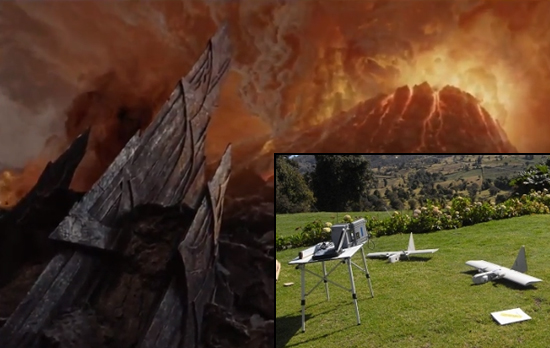NASA Flies Decommisioned Drones Over Active Volcano, Because Sure, Why Not
Some science news stories involve NASA. Some involve volcanoes, noxious vapors, or even drones. What are the chances of all of the above rolled into one? Exceptional, because NASA in fact sent drones flying over an active volcano in Costa Rica. The only thing this story is missing are some dinosaur bones or a comet. For now.
We tend to think of drones as flying kill-bots, but scientists have actually been thinking up a lot of cool other things we could do with airborne robots, like rescue people, do reconnaissance, or…well, filming golf tournaments.
And now, NASA has found a good use for three military UAVs — in this case, Aerovironment RQ-14 Dragon Eye drones — on loan from the U.S. Marine Corps. Equipped with sensors and cameras, the drones were sent on 10 separate flights into the miasma of sulfur dioxide rising up from the crater of the volcano known as Turrialba near San Jose in Costa Rica.
This place:
Capable of bearing a one-pound instrument — and perhaps even the One Ring — the Dragon Eyes have a 3.75-foot wingspan, twin electric engines, and weigh almost 6 pounds.
Their purpose was pretty simple: To study the chemical environment of an active volcano from a safe distance using their decommissioned Marine toys, because the researchers probably saw Dante’s Peak and knew better than to get in too close to a smoking mountain.
David Pieri of NASA’s Jet Propulsion Laboratory, without needing Pierce Brosnan’s advice, explained:
“Such flight environments can be very dangerous to manned aircraft. Volcanic eruption plumes may stretch for miles from a summit vent and detached ash clouds can drift hundreds to thousands of miles from an eruption site.”
The overall hope is that the data collected by the drones will form computer models that can help safeguard airspace systems, improve climate predictions, and minimize the dangers for those who live near volcanoes. Of course, even drones would be useless if a volcano erupted in the middle of Los Angeles.
Matthew Fladeland, airborne science manager at NASA’s Ames Research Center, summed things up:
“This project is great example of how unmanned aircraft can be used for beneficial civilian purposes — in this case for better understanding Earth system processes and the impact of volcanism on our atmosphere. By taking these retired military tools, we can very efficiently and effectively collect measurements that improve NASA satellite data and aviation safety.”
Being able to safely monitor the interior of a volcano would also make us better at locating the lairs of super villains, who tend to choose such inhospitable locales. Just a thought.
(NatureWorldNews and UPI.com, images courtesy of Google/NASA/Matthew Fladeland, Matt Ephraim on Flickr, Amazon, and YouTube)
- Taloned Eagle drone can snatch prey from mid-air
- NASA has an Angry Birds exhibit
- Neverwinter unveils a new volcanic zone
Have a tip we should know? tips@themarysue.com
